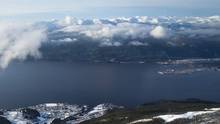How three governments are conspiring to kill Northern Gateway
 The approach of the B.C .government to the Northern Gateway Pipeline is as crude as the pipeline’s contents: semi-refined, at best. Premier Christy Clark does have a point: Most of the on-land risk – and all of the shipping risk – accrues to B.C., and most of the public revenues go to Alberta.
The approach of the B.C .government to the Northern Gateway Pipeline is as crude as the pipeline’s contents: semi-refined, at best. Premier Christy Clark does have a point: Most of the on-land risk – and all of the shipping risk – accrues to B.C., and most of the public revenues go to Alberta.The risks of moving oil by sea are low-probability but of high consequence. Pipeline leaks, on the other hand, are frequent but usually minor. Still, the plans announced by Enbridge last week to strengthen the pipeline where it crosses a stream, and to install more-frequent shut-off valves, are all to the good. If that were matched by sufficient financial back-up, through the corporation directly and through its insurers, the proponent’s position would be greatly strengthened. Thus, the reported $600-million global coverage Enbridge carries is short by an order of magnitude. Similar coverage must be required of tanker owners.
In that context, the attempted revenue grab by B.C., and the scandalized response by Alberta, are beside the point. Merely changing the address on the tax cheque will not make Enbridge and the marine shippers any more attentive to environmental risk. If Ms. Clark needs more revenue, she can always claw back some of the property tax the pipeline will pay to municipalities along the route. For this she needs no permission from Premier Alison Redford.
Moreover, it’s the marine side that most needs attention, and here the action lies principally with the federal government. Enbridge has no control over the oil once it leaves the dock in the holds of a merchant tanker. It is up to Transport Canada, the Coast Guard, and the Pilotage Authority to make sure these behemoths get safely out to sea. A pilot who has done more than 400 transits of the Douglas Channel told me it’s a seriously scary piece of water for a ship whose manoeuvrability is as limited as that of a large, loaded tanker.
What does the federal government need to do to make this project acceptable? For starters, we need a serious oil spill response capacity on the West Coast. The Coast Guard currently has no capable ships, and no trained crews, for dealing with even a modest spill. The closest response capacity is many hours from the Douglas Channel. The Coast Guard needs a base in the region, a dozen small ships and a few bigger ones, new regulations, new response doctrine, new training manuals, and a lot of at-sea practice before the first tanker sails the channel.
One will also need quite a number of new licensed pilots. These take almost as long to train as neurosurgeons, so it’s time to get started. For a federal government whose only relevant action so far is moving the sole West Coast oil spill response facility to Quebec, there is a lot to do.
The feds need to ensure that all bridge personnel speak English – not the case currently, as any casual listener on the VHF vessel traffic management channels can attest. There must be a second pilot aboard whenever the voyage from terminal to open sea exceeds, say, eight hours. A minimum bridge crew of 3 or 4 would ensure that the sort of activity that sank the Queen of the North becomes much less likely.
A lesson learned from the county’s various water supply fiascos is that the probability of disaster is seriously lowered by adherence to safety standards established by boards of professionally qualified persons. Health Canada, the provinces, the Canadian Standards Association and the Canadian Water and Wastewater Association have all played important roles in establishing standard operating procedures of exceptional sturdiness. A critical element is third-party inspection, backed up by enforcement under the law. All three governments, working together, need to establish similar mechanisms for pipeline and seaborne transport of oil. The primary onus should be on the private developer, of course, but its efforts will always need to be backed by professional standards, regulations, inspection and enforcement. Let’s hope the NEB makes this a condition of licence.
Our government has declared the Northern Gateway Pipeline to be a work in the interest of the nation as a whole, and I do not disagree. But it has to put its money where its mouth is. As things stand now, B.C. and its First Nations will ensure the Pipeline is never built.
You can return to the main Market News page, or press the Back button on your browser.

